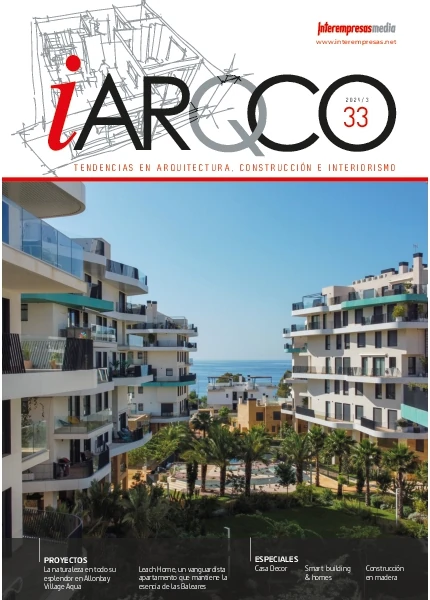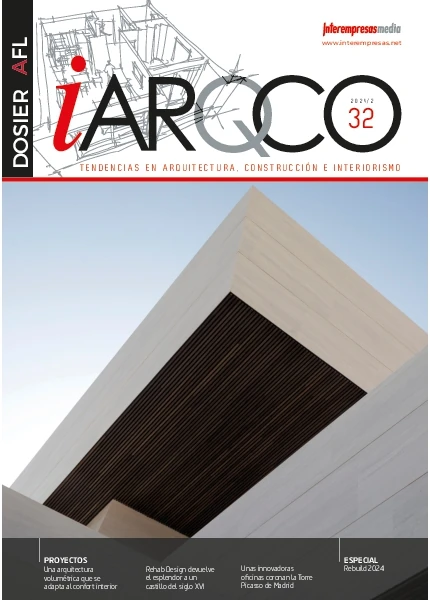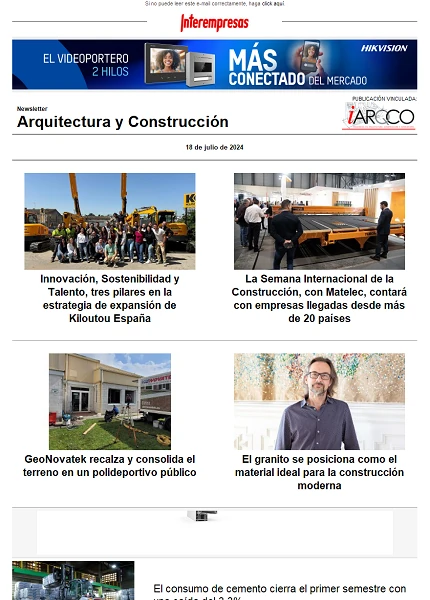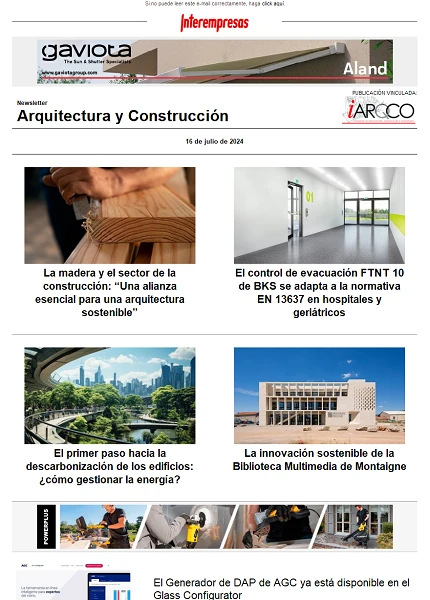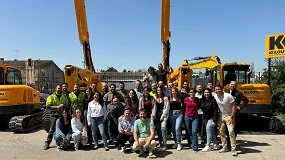Last tendencies in the thermal sensors isolation by the outside (SATE) with EPS
Architects, manufacturers, associations, constructors and pertinent real-estate promoters of 20 countries participated in the meeting of international experts in the Imperial Hotel Riding School of Vienna. In the meeting organised by
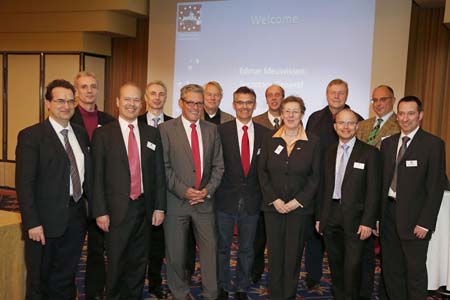
The System SATE is one of the systems under construction of façade of faster growth, playing an essential paper to attain an optimum energetic efficiency so much in new buildings as in rehabilitation. In a program of two days, the main European experts on SATE provided complete information on all the notable and current subjects related with this application, such as: evolution of the market and of product, technology of processing, protection against fires, optimisation of the cost, architecture, environingingment and recycled.
Main subjects treated
Ralf Pasker (European Association for SATE) in his presentation on the development of the market indicated, that in the actuality, have installed in Europe roughly 2 billion of m2 of SATE, being 85% with isolation of EPS. This gives place to enormous reductions in the use of fuels fossils, gas and in the broadcasts of CO2 (gas effect invernadero). “Once installed the System SATE saves during all the life”, said Pasker.
Wolfgang Setzler (German Association of SATE) presented in the frame of his conference on ‘special Applications' three different approaches in the use of the SATE of the darkest colours. It does time the technical consensus was that SATE only had to apply with colours with a luminosidad greater of 20%. In the last years, however, the architects prefer clearly the darkest colours. The solutions proposed current are: the application of a second layer of reinforcement, the use of layers of fibre of carbon reinforced with high elasticity or the utilisation of special pigments of infrared of reflection, that give like lower result retention of heat. Regarding the useful life of SATE Setzler identifies a change of paradigm: “after a lot of years of use of a system SATE, is necessary an adjust to the new exigencias of energetic efficiency, this does not mean the demolición of the system, nowadays the rule is the duplication of the existent systems with the extension of an additional layer”.
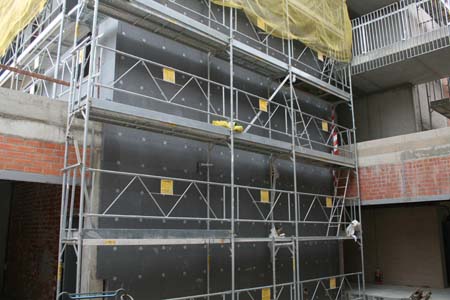
Ingolf Kotthoff (IBF, company of engineering of protection against fires in faã§ades), received a big quantity of answers with the presentation of Protection against Fires in SATE. In his more than 10 years in activities of investigation for the Leipzig MFPA, the Mr. Kotthoff has studied the behaviour in front of the fire in faã§ades through numerous essays. Concluding: "it has not studied with so much depth any another method of construction for distinct cases of fires like the System SATE with EPS”.
“The System SATE with isolation of EPS if it installs properly does not represent an additional threat to the hygiene against fires”, signalled Edith Antonatus (BASF ) the one who commissions to analyse the problems of hygiene against fires during a construction and presented proofs that the containers of EPS and the exposed faã§ades of EPS can not burn by small or average sources of ignición, such like fires of flare, 1 litre of petrol or an antorcha.
Georg Pommer (Municipal Department 39 of Vienna) presented ‘what do and what not doing' in the process of installation of a system SATE and stood out the need of a correct adherencia with the adhesive surface of contact of at least 40%. Besides, it did upsetting in the importance of the upper and inferior thicknesses, that have to integrate the layer of reinforcement.
Rüdiger Lainer (Rüdiger Lainer And associated) in his presentation showed the variety of possibilities in the architectural design of the system SATE, explaining it through a survey realised on the project that he designed. The group visited the building of recent residential and commercial construction in the Raxstraßand of Vienna. Also it realised a visit to Eurogate, the biggest settlement of the world of passive house, with 1.700 houses in 100.000 m², resaltando the application of the system SATE in faã§ades with isolation of EPS.
Clemens Demacsek (GPH, Austrian Association of EPS) presented calculations of optimisation of costs in function of the values of isolation of the envolvente of the building for houses unifamiliares. This shows the profitability of the isolation EPS. High thicknesses of isolation contribute no only to the reduction of the primary power and the broadcasts of gases of effect invernadero, but also, to the reduction of the global cost during the period of 30 years of life established by the European Union.
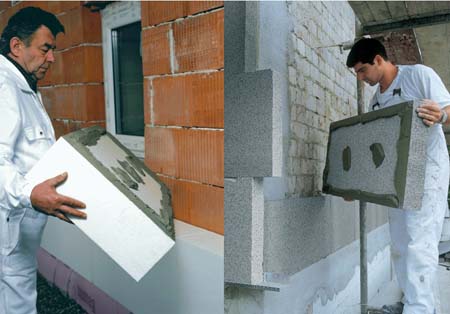
Ernst Heiduk (FH Kärnten) during his presentation of the ‘Analysis of the Cycle of life of the System SATE' resaltó that the period of energetic return for the majority of the isolation is lower of two years. “Especially with EPS the period of recovery is very low, having also a big variety of options of recycling, being the option ecologically more desirable and effective. However, the low current volumes of waste of systems SATE of EPS, due to the fact that they still are into use the big majority, does that it still was not profitable this option”, said Heiduk. The incineration of EPS for the recovery/revalorización of power can consider like the environingingmentally acceptable solution.
The useful life and the maintenance of the faã§ades with SATE depend on the quality of the design, the construction and his maintenance, being less determinantes the materials used or the system of construction. “Define or declare which is the useful life of a system SATE at present is difficult to determine, due to the fact that this system still does not carry into use the sufficient time. The first system SATE with EPS documented in Austria was built in 1966 and to date of today works properly. With a design and appropriate installation, together with a suitable maintenance is possible that arrive to an useful life of 50 years or more".
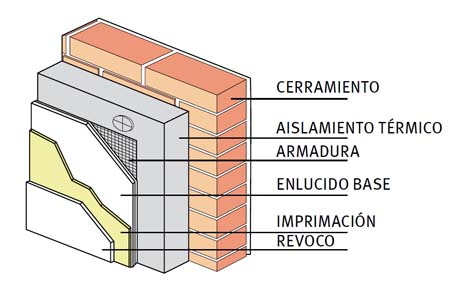
Wolfgang Albrecht (Institute of thermal sensors sensors Investigation of Munich), informed on the state of a program of investigation on the recycled of the components of the System SATE that is in course until 2014.
Edmar Meuwissen (General secretary of Eumeps) showed very satisfied with the success of the evento in Vienna, seeing a promising future in the use of the Poliestireno Expanded in the systems SATE.
For the thermal sensors isolation in the construction, the EPS offers properties on a long-term basis, such as the high value of isolation, high resistance to the compressesion and to the humidity. The EPS is light, versatile, easy and entirely sure to work, by what is the ideal material with a wide range of applications. The EPS has a key paper to guarantee the hygiene in buildings confortables and efficient energetically, whereas it also contributes strongly to the mitigación of the broadcasts of gases of effect invernadero. The EPS comprises around the 35 percent of the market of thermal sensors isolation total in Europe and with more than 55.000 people employed in the European industry. The paper of Eumeps and of Anape is to ensure that the advantages of the EPS are presented to a wider public. This attains by means of the exchange of information that allows a continuous dialogue with the parts interested to national level and European.
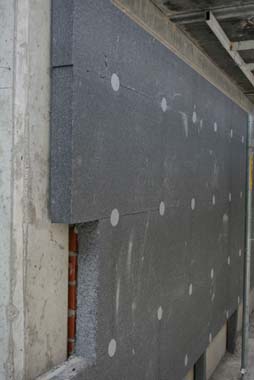
Anape Is the National Association that groups to the Spanish industry of the Poliestireno Expanded. The main aim of Anape consists in serving of representation of the sector in front of the diverse interlocutor, contribute to the users of products of EPS all the information that sue on this material, as well as the development of activities to improve the knowledge and utilisation of the products that include this material.


